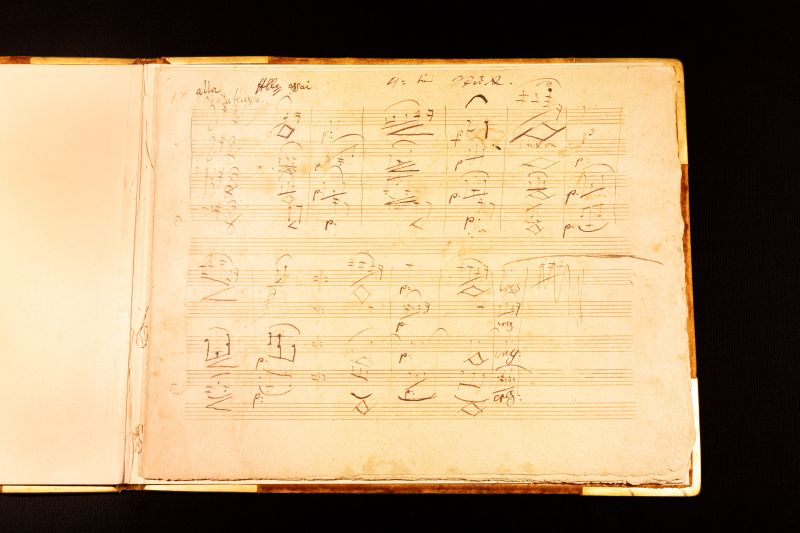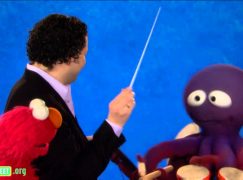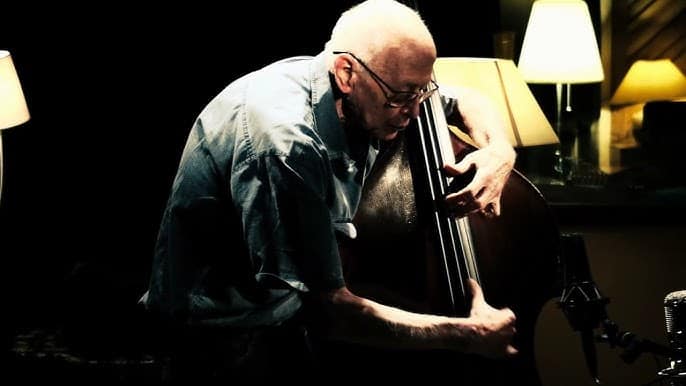It plays LPs without touching the surface
mainTruly an indispensable invention, the new ELP Laser Turntable plays records without using a needle!
No scratches, no surface noise.
The Laser Turntable employs patented technology that produces phenomenal fidelity while never physically touching the record, thus eliminating the deterioration to the album’s surface inflicted by conventional turntables. The laser’s precision allows you to pick up audio information that has never been touched or damaged by a needle. This virgin audio information is then reproduced without digitization maintaining true analog sound as close as possible to when the master tape was recorded. The Laser Turntable even allows you to play records that have been severely warped or damaged over years of wear and tear.
So what’s the catch?
Price: $15,000.
Wait for the sales.






Big misunderstanding. Vinyl is not about fidelity. Its about the added effect of harmonic distortions and attenuated sharp transients.
This device is a great tool for libraries or anyone who wishes to digitize his vinyl records for the future. But it gives the true vinyl lover nothing, comparable to a motor bike with a roof. If you love riding motor bikes, the advantage of rain protection doesn’t do it for you.
The misunderstanding, it seems to me, is yours. This machine is not designed to change anything about the sound as it was recorded and imprinted on a disc. All it does is, it allows you to enjoy all of the “harmonic distortions and attenuated sharp transients”, and/or whatever else you like in vinyl, for much longer and many more times.
Sorry, you have no idea. Almost all these euphonics are in the very reproduction side, this device is missing.
In that case, it is not the peculiarities of vinyl discs themselves but the imperfections of the players that will be missing. Did not realize that extra-musical sounds are that valuable for listeners who like music.
Perversely enough, the very limits of vintage equipment have indeed added features to the sound of both the recording and playback side that many people find very pleasing. I was reminded of this fact when listening to a BBC – Creating a Library episode on a cheap radio and horrible earphones (when on holiday): Some old “tubes and tape” recordings (in this case Sir Adrian Boult on EMI) still sounded like a million dollars, while modern ones sounded inferior (as they SHOULD have on this dreadful equipment). The same goes for playback: e.g. old tube amp can reduce some (harsh) overtones and add some others (usually harmonious ones) which add warmth to the tone.
I know this all sounds counter-intuitive and wrong, but since a recording will never be the real thing (a live performance in a great hall), we might as well acknowledge that the recording and playback devices in some ways act like a musical instrument itself.
As far as this new laser-turntable is concerned – why even bother discuss its sound when none of you have actually listened to is yet?
Mr. Oakmountain, my comment was not about its sound but about its conceptualization and marketing, as evident in the maker’s marketing text.
not only extra-musical sounds. There is a whole consumer goods industry out there, selling to the “Audiophile”. Their revenue is solely based on these extra-musical features, which promise satisfaction to the “Audiophile”.
You can understand the motivation of the audiophile to spend insane amounts of good money on objectively useless goods and devices – or best case insanely overpriced well engineered goods with iconographic extensions, that suggest faux superiority over equally good but less fancy wrapped goods – only, if you understand the need not only those in the middle – the interpreters – but also for the last link in the music consumption chain, the listener, to be a creator himself.
To celebrate the manually elaborate ritual of putting a vinyl record on the turntable, to sit down and know that you have labored for months in your office cubicle, only to afford the pure oxygen-free-silver loudspeaker cable, and to afford the anti-gravity-teflon-supercollider rack screws, certified by a Klingonian virgin during a solar eclipse, all that makes the listener happy, makes him feel like a CREATOR, because he just created that super-elevated event of music listening…
That simple psychological mechanism has been overlooked by the music industry, except for a few snake oil sales men, who found their ideal customer base.
These customers do not listen to scientific fact, just like the religious fundamentals do not listen to those who demand proof for the existence of god.
People who like music do not want “truth”. They want super-elevated sonic experiences.
Those music lovers whom I know, including myself, want to hear the sounds as intended by the composer and as realized by the interpreter – and nothing else. The only real advantage of listening to recordings as opposed to live in concert therefore is the opportunity to eliminate sounds made by the audience. Other than that, live performance is best.
Sure. Live performance is best in many aspects. Also very important IMO is the presence of the audience for the musicians, it gives them immediate meaning and motivation to excel in their doing, something that doesn’t come naturally in a recording studio.
But where in the hall you sit and listen to the concert, where in the hall is that sound the composer and the interpreters intended?
Depending on which hall it is, of course, but preferably in good seats of a good hall – obviously – which generally tend to be near the center and not too close to the stage.
In live performance, the audience’s presence is usually beneficial for expressive aspect of the performance; recordings, on the other hand, can usually be more polished technically.
“true analog sound as close as possible to when the master tape was recorded.”
Nonsense, in the days of vinyl, both the recording engineers and the mastering engineers who were cutting the masters, were anticipating the huge shortcomings of the vinyl medium and “interpreting” the recorded and mixed sound accordingly, finding the most musical compromise between waht the music required and what the medium allowed.
The idea of a “true recorded sound” is nonsense by itself. True to what reference? Your ears my ears? Row 12 middle? Above the conductors head?
And the added common misconception of what analogue vs digital means, makes it bullshit to the square.
this is an optical device, but not digital… just as laserdisc was an analog tech using optical
CD/DVD/Blu-ray has made people associate optical with digital… to illustrate the opposite, there were digital technologies that used tape like DCC and digital on Betamax, used by some home studios in the late 80s and early 90s…
v
Having seen the previous debacle of this technology, I am very suspicious about this “new” iteration. The last attempt suffered from severe noise problems, inability to separate noise from signal, and poor technology to overcome confusion of wear and physical damage with signal engraving, as well as dealing with varying groove angles from various cutting systems, not to mention vertical modulation, which can be very complicated in terms of both sensitivity and focus.
To then digitize the signal thereafter seems more than ridiculous, but may be required to bring sound quality near or up to that of CDs, which, of course, renders the whole process as worse than useless for proper and superior LP reproduction.
I would love this technology to succeed, but for less than15 grand you can buy a quiet, close-to state-of-the-art phono system that does not wear LPs and gives close to perfect LP reproduction. I already have one. This, combined with conscientious record care and cleaning are a much more efficacious solution to whatever problems vinyl may present in high end audio systems.
What a refreshingly non-slick video – the Japanese equivalent of one of those Harry Enfield sketches. But equally, what a technical tour de force!
“Laser reproduces honorable music without any damage…”
I’ve never heard a Japanese person say “honorable” something or other before.
I thought it was just a silly American movie cliché.
$15,000?
Well, give it a few months. The Chinese will have a flammable knock-off on the market for $99.
This creation by ELP should be particularly effective in playing recordings made by Emerson/Lake/Palmer.
Finally, some competition for that Slovenian turntable that looks like a miniature nuclear reactor – although, last time I saw one advertised, it was going for a mere $10k.
This originally was developed in the 1980’s (and begun even earlier, I think) but I understand it never went into production after prototypes were shown in the mid-80s. Very expensive and coming out just as the compact disc was gaining strength.
It may be a version of the Finial Laser Turntable that was reviewed by
Home Theater Review.Com,, February 13, 1990 and was shown at the
Tokyo Audio Fair that year. Sony, I understand, owns one. Judging by the quality
of some Sony reissues, it may be that Sony is using it for that purpose.
What about surface noise and end-of-side distortion? They are the reasons I changed to CD, not for the sound quality.
SACDs and BluRay audio deliver the best sound at the moment – even old analogue recordings can now be heard without compression (which was pretty well always used on vinyl of over 15′ per side). Sadly both formats are probably doomed!
The CD has a dynamic range of over 90 dB
Professional Tape, depending on optional noise reduction, in the 60-70 dB range.
CD always could accommodate the full dynamic range of tape easily. What made you think it couldn’t?
Remember the early 1980s when the manufacturers of compact digital discs promised (quote) ‘Perfect sound for ever?, conveniently forgetting that digitally recorded (or digitally processed crap muzak from an analogue source could never reproduce a totally smooth wave form – hence its inferiority then AND now!
That’s simply bull… Really nonsense.
While in the very beginning in the early 1980s the equipment was really quite immature, since then, over 30 years later, the available technology has improved immensely.
Today, if a recording is done at higher sampling rates and bit depths, and only in the mastering to CD is converted to 44.1 and 16 bit, there are not many people, less than 3% of self-declared audiophiles and music lovers, who can verifiably hear the difference between the studio master and the CD.
Don’t believe everything you hear. Most of what is circulated, warmed up and recycled is nonsense for marketing reasons. The business consumer audio is extremely bullshit infested.
How well does it handle quad (4-channel) vinyl? 78 rpm classic Victrola disks? If so, there’s a niche for folks who are worried about wearing complex or ancient surfaces.
I have resisted the temptation to upgrade my favourite audio listening device since 1955.
Just before Christmas that year I purchased a top of the range Philips high fidelity radiogram called the “Beethoven” model. With some regular maintenance applied over the years (by old school technicians who understand old things) it has given faithful service and still performs with strident ambition.
When all nine valves are well lit and the diamond stylus tracks nicely, sound reproduction from high quality vinyl LPs via the three speakers continues to satisfy me.
It impresses our teenage grand children. They insist that the music sounds much better than CDs played through the $800 sound system they bought a year ago. The magic eye tuning device that winks at them if an AM radio station is not tuned properly also amuses them.
So all the fuss about analogue versus digital really doesn’t matter to me. I prefer to listen to the music and enjoy the “musicality factor” rather than be too critical of the more technical aspects of my listening experience. Unless the quality of sound reproduction is noticeably below a perceived standard – as judged by me – I just hear the music.
But, then again, I’m old and eccentric, and don’t understand some aspects of modernity.
I’ve always thought my vinyls gave me a similar sound to what I would hear from some distance in a beautiful concert hall.
That is what I would like to hear.
It seems to me that modern recording technology is taking us further away from what I like, but perhaps other genres of music are affected differently.
I don’t want to hear every up close detail. I want it to sound as if I am sitting 100 feet away.
Not spending 15k on this though.
FYI — The “inexpensive” model is $8000 new.